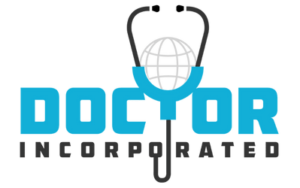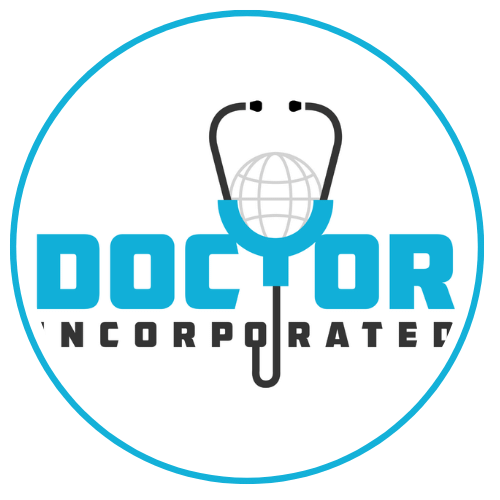[et_pb_section fb_built=”1″ theme_builder_area=”post_content” _builder_version=”4.21.0″ _module_preset=”default”][et_pb_row _builder_version=”4.21.0″ _module_preset=”default” theme_builder_area=”post_content”][et_pb_column _builder_version=”4.21.0″ _module_preset=”default” type=”4_4″ theme_builder_area=”post_content”][et_pb_text _builder_version=”4.21.0″ _module_preset=”default” theme_builder_area=”post_content”]

When you earn and receive 1099 income, you are signaling to the government that you are engaged in business-to-business activity.
That is because 1099 income means you are an independent contractor; by definition, that means you are a micro-business of some type. The IRS will require you to declare which type on the IRS form W-9. If you are not ready for this, you will default to being considered a sole proprietor. While this is much better than earning the dollars as a W-2 employee, a micro-corporation will allow you to retain more of those earnings than as a sole proprietor. Check out my blog post here that breaks it all down for you.
The past generation of doctors have been conditioned to behave only as employees—thus you are typically business illiterate—therefore, asking you to embrace the mindset of working as a micro-business is both intimidating and challenging.
My message to you is that you not only have the capacity to own and operate a professional micro-corporation, but your life will be better off if you do. I want to inspire you to see what is possible because owning a professional micro-corporation is a built-in privilege associated with your professional state.
This post will inform you about your options on how to best receive your 1099 income as a micro-business.
In my last post, I reviewed with you the basic framework for business options which is based on the bifurcated choice of doing it as either as a sole proprietor or incorporating. Incorporating is typically better for doctors.
There is a gambit of options for incorporation that can range from the simplicity of single member LLC which passes through an individual social security number— all the way to corporate structures that have their own tax identification as a business entity separated from your individual identity.
This blog post will discuss those various corporate entity options for you.
My Recommendation
Let me begin with my recommendation that a single-member professional micro-corporation taxed as an S-Corp will be your best option to flow your medical contracting work through—this will be true for the majority of you. There are a number of physician-specific reasons for this—but asset protection, tax strategies, & larger retirement funds are just a few to mention.
However, I invite you to keep reading to discover why this is your best option. That is because there are multiple business structure options, and based on your individual situation, sometimes other options can be a better fit.
Let’s review things this week by starting with the single-member LLC option, which is tied to your personal social security number. And then compare and contrast this with the two most common corporate choices that require employer identification numbers that are separate from your social security numbers: a single-member Professional Corporation (SMPC) and a single-member Professional LLC (SMPLLC)
Which Corporate Structure Is Best?
Compared to the simplicity of a single-member LLC, the expenses and complexity of an SMPC and SMPLLC are still minimal—which is the first psychological hurdle that any doctor has to overcome.
You have been conditioned to believe that the business of medicine is too complex and the tasks of running a business and managing employees are just too burdensome.
I agree with this mindset if you are talking about traditional private practice.
But. let me be clear, I am not talking about forming a “private practice” corporation for operating a retail medical practice to compete on the healthcare playing field. This is where many of you can get confused. Most of you assume starting a professional medical corporation of any type is essentially the same thing as “private practice” which is then transliterated into a retail space, medical office building, staff, equipment, 3rd party management, etc… Nope this is NOT what I am referring to.
The Modern Virtual Professional Micro-Corporation
Instead, I am talking about a virtual professional micro-corporation that is basically an invisible covering over your individual medical life. It goes wherever you go individually and becomes an entity that your professional work can pass through. Because you are an integrated individual & business entity—you can choose to do work as an individual (W-2 work) and/or choose to do work through your corporate structure as a contractor (1099 work). It’s your choice that you can apply to any and every professional job option you encounter
So for the sake of this conversation about independent contracting work, I am talking about you creating a virtual medical corporation that you can use to manage your professional earnings associated with your 1099 income—and it doesn’t matter whether those professional services are provided in person or virtually—it’s all the same.
In terms of administrative burdens—the only employee you have to manage is yourself—which should theoretically be simple! The other tax, legal, and accounting business management tasks can be easily and efficiently outsourced or self-managed—you get to decide as you have the autonomy and freedom to operate your own corporation.
I love my professional micro-corporation and outsource a good portion of the administrative elements, including hiring my wife as the book-keeper (there are tax and retirement advantages to this arrangement)
Single-Member Corporate Options
As you reflect on your corporate structure options as an independent contractor, you will find the three most common involve single member (meaning you have complete control of the corporation) options whose income will flow into your individual-personal tax return-a single member LLC(SMLLC) or flow into your corporation first—via a single member PC (SMPC) or a single member professional LLC (SMPLLC).
Between these options, you can make the choice—do you want to keep it simpler and flow your earnings through your individual tax return as a single-member LLC—or do you want just a little more complexity (with more tax and business advantages) and flow your income through your professional micro-corporation such as single member Professional Corporation(SMPC) or a single member Professional LLC(SMPLLC).
SMPCs & SMPLLCs have a choice to choose to be taxed as a C-Corp or as an S-Corp. For each one of you, it is helpful to evaluate with a business and tas professional which would be best in regard to your taxes and household benefits.
Pass-Through
For the sake of our comparison, it is helpful to know that an SMPC or SMPLLC taxed as an S-Corp is considered a “pass-through entity” to your individual tax return. This makes it functionally very similar to a single member LLC—although it is not the same thing as a “disregarded entity” —a single member LLC—the end result is that tax responsibility of the business activity in both cases is associated with your personal tax return.
There are separate tax codes that apply to each of these corporate entities and which one works best for you individually should be a matter of discussion with your tax professional.
So let’s take a general look at these 3 common business formation options for contractors so that the earnings either directly flow to them or “pass-through” to them.
What Is A Single Member LLC?
A single-member LLC, or limited liability company, is a type of business structure that provides personal liability protection for its owner. This means that the owner’s personal assets are not at risk if the LLC is sued or goes into debt. Doctors often choose this type of structure because it offers them flexibility when running their business and protects their personal assets from legal action. Furthermore, a single-member LLC can be established with minimal paperwork and costs compared to other types of business structures.
It is considered a disregarded corporate entity and therefore is taxed through your individual social security number and tax filing.
Simplistically it provides you with liability protection, and business deduction expenses via Schedule C, but allows you to do it without all the administrative and tax responsibilities of a corporation.
Doctors who are considering setting up a single-member LLC should be aware of the potential disadvantages associated with this type of business structure. While a single-member LLC provides some tax advantages, it can also come with some risks and drawbacks, especially for medical professionals. For example, a single-member LLC may not provide as much protection from personal liability as other business structures such as corporations or partnerships. Additionally, the doctor may have to pay self-employment taxes on all profits earned from the business, which could be higher than what they would pay under other structures.
Now let’s consider some of those other structures.
What is a Single Member Professional Corporation?
A professional corporation is a type of corporation that is specifically designed for professionals to provide them with the same legal protection and tax benefits as a regular corporation. However, unlike a regular corporation, a professional corporation is subject to certain restrictions, such as limiting ownership to licensed professionals in the same field.
A single-member professional corporation (SMPC) is a company that is owned and operated by a single individual. It is a business aligned to just 1 person (you), and it offers liability protection for the owner. This means that the owner’s personal assets are protected from the business’s debts and obligations.
To create a single-member professional corporation, the owner must have an independent medical license in your state, and then file articles of organization within the state where the business is located. This is a simple process that can usually be completed online or by mail. Once the articles of organization are filed, the business owner must create an operating agreement, which is a document that outlines how the business will be run. You can do this yourself via inexpensive online legal companies, but in my opinion, it is well worth hiring a professional to help you do this.
The rules and regulations for forming a professional corporation vary by state and profession.
The best approach is to hire an agency that exclusively works with physicians because they will help you build a professional corporation that best suits your individualized needs. Every professional corporation uniquely reflects the owner and thus a personalized approach to creating it is much better than a generic model—which can be cheaper—but not nearly as robust.
Even better is an agency that is led by a physician who coaches you and surrounds you with an entire team who manages this for you. I suggest SimpliMD for this kind of comprehensive work.
You can schedule a free business consultation meeting with SimpliMD here.
What Is A Single Member PLLC?
A PLLC stands for Professional Limited Liability Company. It is a type of business entity structure that combines the liability protection of a limited liability company (LLC) with the benefits of a professional corporation (PC).
A PLLC is typically used by licensed professionals, such as doctors, lawyers, accountants, and architects, who are required to form a professional corporation or register as a professional association in order to practice their profession. However, a PLLC offers the added benefit of limited liability protection for its owners, similar to that of an LLC.
Professional LLCs offer a number of advantages to doctors, for instance, they provide asset protection and tax benefits. Additionally, professional LLCs can help doctors maintain their professional reputation by separating their personal assets from their business assets. This is especially important for physicians who are subject to malpractice suits or other legal issues related to their practice. Furthermore, a professional LLC allows doctors to retain control over the decisions made in their practice while still enjoying the benefits of having a limited liability company structure.
In most states, the PLLC is subject to the same requirements and regulations as a professional corporation, including state licensing requirements and the need for all owners to be licensed professionals in the same field.
What is the difference between a single-member PC and a single-member PLLC?
Both Single Member Professional Corporations (SMPCs) and Professional Limited Liability Companies (PLLCs) are business entities used by professionals to provide services to clients while protecting their personal assets from business liabilities. However, there are some key differences between the two:
-
Formation: A SMPC and an SMPLLC can have only one shareholder—you as the physician-owner. Both corporations can be expanded to include more than one professional shareholder in the corporation.
-
Liability protection: Both SMPCs and SMPLLCs provide limited liability protection, which means that the personal assets of the owner(s) are protected from business liabilities. However, the specific details of the protection may vary depending on the state where the entity is formed.
-
Taxation: SMPCs and SMPLLCs can elect to be taxed as an S-corp or C-corp. S-Corps are taxed as pass-through entities, which means that the profits and losses of the company pass through to the individual member(s) who report them on their personal tax returns.
-
Corporate formalities: SMPCs are required to follow strict corporate formalities, such as holding annual shareholder meetings and keeping minutes of those meetings. SMPLLCs, on the other hand, have more flexibility and are generally not required to follow as many formalities.
Overall, both SMPCs and SMPLLCs offer liability protection and can be effective business structures for professionals. However, the specific needs and goals of the individual may determine which design is most appropriate for their particular situation. It is recommended to consult with a legal or financial professional to determine which entity is right for you.
What is the difference between a single-member PC and a single-member LLC?
Different Structure
A single-member professional corporation(SMPC) is a type of corporation that is set up specifically for licensed professionals such as doctors, lawyers, and accountants. It provides liability protection to the individual owner from the debts and liabilities of the corporation, but not from the individual’s own professional malpractice.
On the other hand, a single-member LLC is a type of limited liability company that is owned and operated by one individual. It provides liability protection to the owner from the debts and liabilities of the LLC. Additionally, an SMLLC can elect to be taxed as a disregarded entity (pass-through taxation), which means that the profits and losses of the LLC are reported on the owner’s personal tax return.
While both entities offer limited liability protection, the main difference between an SMPC and an SMLLC is the type of business that they are designed to serve. The SMPC is designed for licensed professionals while the SMLLC is more flexible and can be used for a wide range of business purposes.
Different Tax Advantages
The following reviews general information about tax advantages associated with SMPCs and SMLLCs
-
Potential for Lower Self-Employment Taxes: One potential advantage of a professional corporation is the ability to reduce self-employment taxes. In an LLC, all profits are subject to self-employment taxes, including the owner’s share of the profits. In a professional corporation, the owners can structure their income as a salary, which is subject to payroll taxes, and as dividends, which are generally not subject to self-employment taxes. By allocating a portion of the profits as dividends, PC owners may be able to lower their overall tax burden compared to a single-member LLC.
-
More Flexible Tax Planning: Professional corporations may offer more flexibility in tax planning compared to single-member LLCs. PCs can provide various tax planning opportunities through different income allocation methods, distributions, and compensation structures. By working with a tax professional, PC owners can potentially optimize their tax strategies to take advantage of deductions, credits, and other tax benefits available to corporations.
-
Deductible Business Expenses: Both professional corporations and single-member LLCs can generally deduct ordinary and necessary business expenses. However, it’s important to note that the deductibility of expenses can be subject to specific rules and limitations set by tax authorities.
-
Retirement Plans: Professional corporations may have more options and flexibility when it comes to retirement planning. PCs can establish various types of retirement plans, such as 401(k) plans, SEP IRAs, or defined benefit pension plans, which can provide tax advantages for both the business and its owners. These retirement plans may offer higher contribution limits or more favorable contribution rules compared to what may be available to a single-member LLC.
What is the difference between a single-member LLC and a single-member PLLC?
The difference between a single-member LLC and a single-member PLLC is important for doctors to understand. A single-member LLC is a business structure that allows a doctor to keep their personal assets separate from the business assets, while a single-member PLLC offers the same protection but with additional tax benefits. Both structures offer protection from personal liability, allowing doctors to focus on providing professional services without worrying about potential financial losses due to lawsuits or other liabilities. However, it is important to understand the differences between these two structures in order to make the best decision for your practice.
A single-member LLC is called a “disregarded entity”. Its business and financial activities are associated with your personal social security number (TIN). Whereas a PLLC is a separate check box on the W-9 form and must have an Employer Identification Number (EIN) associated with it. That is because it is a business considered separate from its owner and thus must file its own corporate taxes annually. Meaning you will have individual AND corporate taxes to file each year.
Solo View
I admit it, I favor using my single-member business structure as the contracting entity for all of my professional work. I especially see the benefits of virtual and single-member corporate structures becoming more pronounced for doctors in the future.
The old model of 1 doctor working 1 job in 1 location is being replaced by the modern model of 1 doctor working numerous jobs in numerous locations worldwide. This latter trend pushes doctors away from aggregating in locally owned small private practices and places you in a position to parse your professional services to larger corporations who really see you as contracted labor (rather than an employee).
In the end, most doctors will be receiving 1099 income and are going to have to choose either to be a sole proprietor or a single-member professional micro-corporation for managing the income.
Summary of Which Option is Best For You?
The choice between a single-member LLC, single-member PC, or single-member PLLC for a physician working as a contractor can depend on various factors, including legal considerations, personal preferences, and the specific rules and regulations in your jurisdiction. It’s essential to consult with a qualified attorney or tax advisor who is familiar with your local laws and can provide advice based on your specific circumstances. That being said, here’s some general information about each structure:
-
Single-Member LLC (Limited Liability Company): A single-member LLC provides liability protection by separating personal assets from business liabilities. It offers flexibility in management and taxation. As a physician working as a contractor, an LLC may be a suitable choice, as it allows for pass-through taxation, meaning the business’s income and expenses flow through to your personal tax return. This structure is relatively easy to set up and maintain, and it provides personal liability protection, shielding your personal assets from potential business liabilities.
Given the choice of business entities that use your personal tax identification number (social security number)—a sole proprietor or single member LLC—I would recommend all doctors choose an SMLLC due to its asset protection structure.
-
Single-Member PC (Professional Corporation): A single-member PC is a corporate structure specifically designed for licensed professionals such as physicians, lawyers, and accountants. PC offers limited liability protection similar to an LLC. The primary advantage of a PC is the potential for reducing self-employment taxes by splitting income between salary and dividends, as mentioned earlier. However, the ability to use this income-splitting strategy may depend on your jurisdiction’s laws and regulations. The reduction in self-employment taxes along with more robust retirement options are what makes me favor this business structure over an SMPLLC.
-
Single-Member PLLC (Professional Limited Liability Company): A single-member PLLC is a specific type of LLC designed for licensed professionals. It combines the liability protection benefits of an LLC with the professional designations and requirements of certain occupations. The exact regulations and requirements for PLLCs can vary by jurisdiction, so it’s crucial to consult with an attorney or tax advisor familiar with the rules in your area. Based on the state in which you reside, an SMPLLC may have some advantages over an SMPC.
When determining which structure is best for you as a physician contractor, consider factors such as liability protection, taxation, regulatory requirements, administrative burdens, and any restrictions or advantages specific to your jurisdiction. Consulting with a professional advisor can help you navigate these considerations and make an informed decision based on your unique circumstances.
I encourage you to take the next step by forming your professional micro-corporation for your independent contracting work. You can sign up for 45 minutes of free business coaching with me at SimpliMD to discuss this further and get a free price quote. My agency works exclusively with doctors to efficiently and effectively set up and operate professional micro-corporations. It’s our area of expertise. You can schedule a meeting at the following link.https://calendly.com/drinc/45min.

[/et_pb_text][/et_pb_column][/et_pb_row][/et_pb_section]


